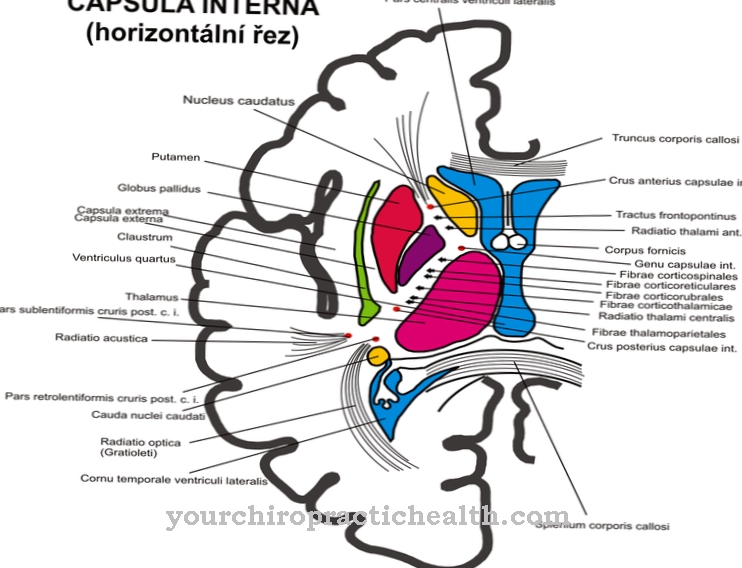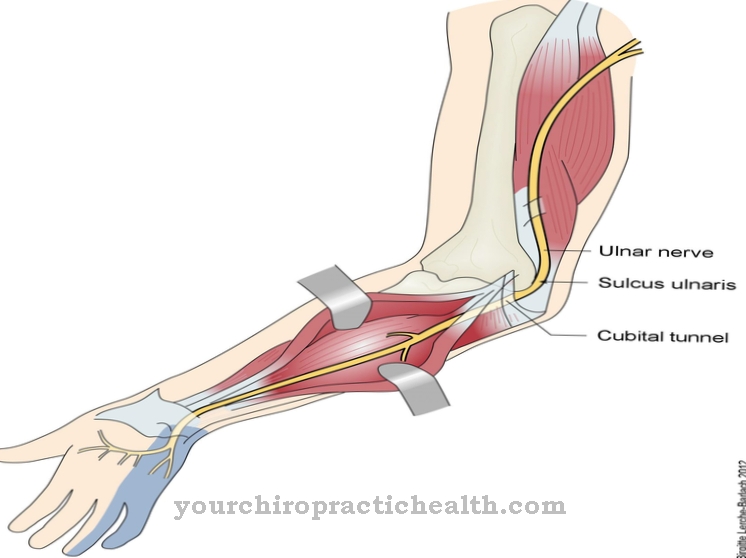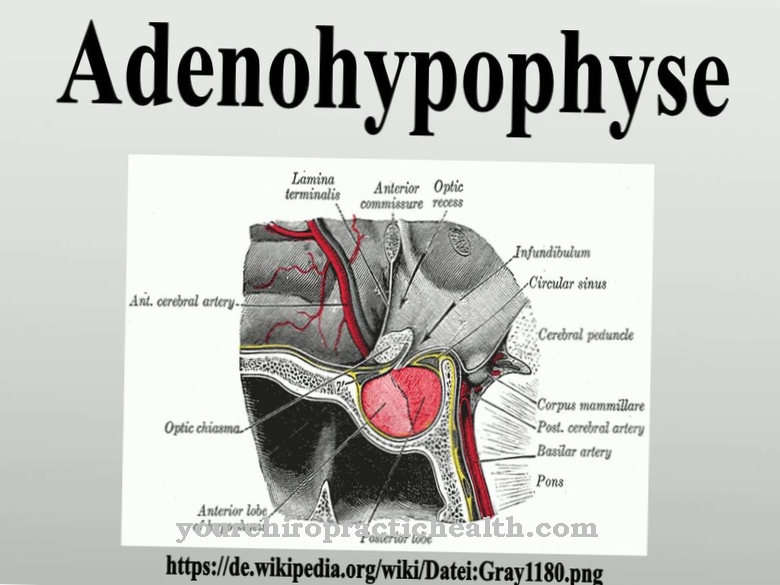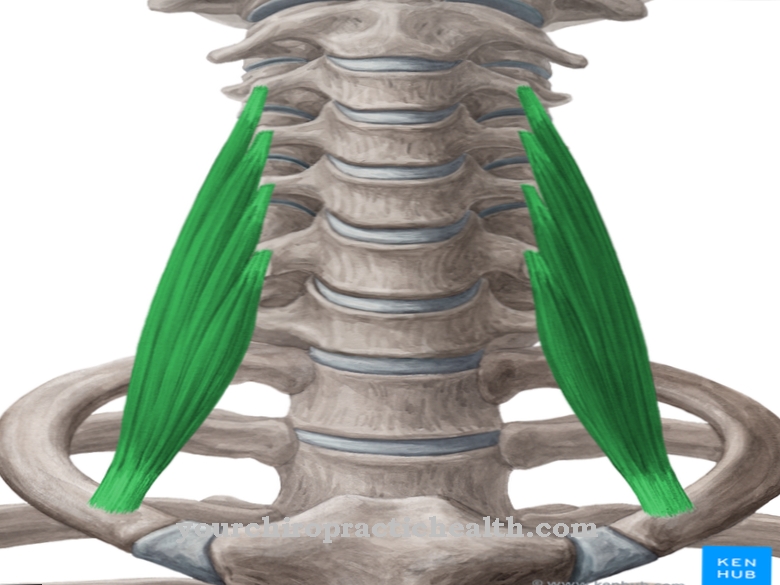Endolymph is a clear, potassium-rich lymphatic fluid that fills the cavities of the membranous labyrinth in the inner ear. Separated by the Reissner membrane, the membranous labyrinth is surrounded by the sodium-rich perilymph. The different ion concentrations between the peri- and endolymph play a major role in hearing, while the mechanical-physical properties (principle of inertia) are used to generate feedback from the balance organs.
What is endolymph?
In the inner ear, within the membranous labyrinth, are the organs that convert mechanical sound waves and rapid head movements or rotary and linear accelerations of the entire body into electrical nerve impulses and pass them on to the CNS via the vestibulocochlear nerve.
The organs are connected to one another via the endolymph, a lymphatic fluid rich in potassium and low in sodium. The membranous labyrinth is surrounded by another lymphatic fluid, the high-sodium and low-potassium perilymph. The membranous labyrinth is, so to speak, floating in the perilymph. However, the volume ratios are extremely small.
The total amount of endolymph in each inner ear is only about 0.07 ml. The voltage potential that exists between endo- and perilymph due to the different electrolyte composition is used to convert the mechanical sound waves within the cochlea, the cochlea, into electrical nerve impulses. When converting acceleration stimuli into electrical nerve impulses, however, the physical-mechanical properties of the endolymph play the main role.
Anatomy & structure
The endolymph consists of a clear liquid, a potassium-rich electrolyte, which is similar in composition to the intracellular fluid (cytoplasm).The endolymph is produced by the epithelial cells of the stria vascularis within the cochlea and reabsorbed by the endolymphatic sac, in which the endolymphatic duct ends, so that there is constant renewal and a dynamic equilibrium between secretion and resorption of the endolymph.
The epithelium of the stria vascularis is one of the few epithelia that is crisscrossed by supplying and disposing blood capillaries in order to fulfill its function of secreting the endolymph. At the same time, the epithelial cells ensure the constancy of the composition of the endolymph. In addition to the high potassium concentration of 140-160 meq / l (milliequivalents per liter), the endolymph contains 120-130 meq / l, a similarly high concentration of chlorine as the perilymph. The protein content only reaches a value of 20 - 30 mg / 100 g and is therefore less than half the protein content of the perilymph. The pH value of 7.5 is slightly more basic than the perilymph, which has an average pH value of 7.2.
Function & tasks
The two main tasks of the endolymph are to enable the conversion of mechanical sound waves and the conversion of head or body accelerations into electrical nerve impulses. For the conversion of the sound waves, depending on the frequency and strength of the sound pressure, into electrical impulses, the electrical potential difference of sometimes over +150 mV between the endolymph and the surrounding perilymph is primarily used.
The conversion of the physical sound waves into electrical nerve impulses takes place with energy consumption by mechanoreceptors in the cochlea. Mechanoreceptors in the semicircular canals and in the macular organs sacculus and utricle are responsible for generating electrical nerve impulses analogous to rotational or linear accelerations on the head or body. The specific weight and viscosity of the endolymph are important for a correct conversion of the acceleration impulses, which determine the physical-mechanical properties. In a broader sense, this also means that the volume or pressure of the endolymph in the endolymphatic system remains constant, i.e. that the rate of secretion and resorption correspond to one another.
Deviations from the normal values immediately trigger unusual acceleration sensations that make coordinated movements difficult. Alcohol consumption leads z. B. to a change in the viscosity of the endolymph, which can last up to 36 hours, so until a point in time at which the blood alcohol content has long been reduced. Another task of the endolymph is to supply certain tissues with which it is in direct contact with proteins.
You can find your medication here
➔ Medicines for earache and inflammationDiseases
The hearing and vestibular sensations can be affected by a number of ailments and diseases caused by abnormalities in the endolymph. A well-known disease is Menière's disease, which changes the composition of the endolymph and perilymph, so that the electrolytic properties are changed and there is an increased accumulation of endolymph in the entire endolymphatic system (endolymphatic hydrops).
The dynamic equilibrium between secretion and adsorption is disturbed. A disease of Menière's disease usually leads to the symptoms of dizziness, tinnitus and hearing loss (Menière's triad). An endolymphatic hydrops can lead to leaks in the Reissner membrane with the effect that the perilymph and endolymph are partially mixed and severe dizziness with discomfort up to vomiting as well as abnormal hearing sensation up to shrill tinnitus appear. Often, symptoms of sudden spinning vertigo are caused by benign paroxysmal positional vertigo (BPPV).
Although the disease is benign in principle, it can be unpleasant if left untreated. The symptoms are caused by a tiny calcium carbonate crystal that has become detached from the saccule or utriculus and has gotten into one of the semicircular canals in the endolymph, causing strange sensations of movement and vertigo. The problem can be solved naturally through a sequence of certain body positions. The tiny crystal grain can be transported back out of the semicircular canal. The exact causes for the development of endolymphatic hydrops have not (yet) been adequately clarified.
It can be assumed as certain that constant stress and psychological strain either directly cause the development of endolymphatic overpressure or favor it as a cofactor.
Typical & common ear diseases
- Ear flow (otorrhea)
- Otitis media
- Ear canal inflammation
- Mastoiditis
- Ear furuncle



























